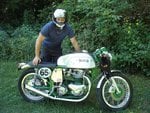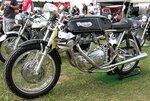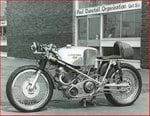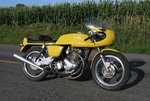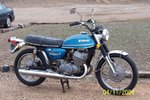Lucky13
Forum Mascot
Well,
I know what a cafe racer is, something built of BSA, Norton, Truimph or anything else British, Norton Featherbed (?) frame with Triumph engine etc., etc...from the '50's and '60's.
Do your best to hit the 'Ton' I think that it was called 100 mph or the race during the 3 minute tune...
Now, nowadays paople are building 'cafe racers' with those Japs contraptions etc...

Does that make it less of a cafe racer, what is a cafe racer to you?
 8)
8)
I know what a cafe racer is, something built of BSA, Norton, Truimph or anything else British, Norton Featherbed (?) frame with Triumph engine etc., etc...from the '50's and '60's.
Do your best to hit the 'Ton' I think that it was called 100 mph or the race during the 3 minute tune...
Now, nowadays paople are building 'cafe racers' with those Japs contraptions etc...
Does that make it less of a cafe racer, what is a cafe racer to you?

